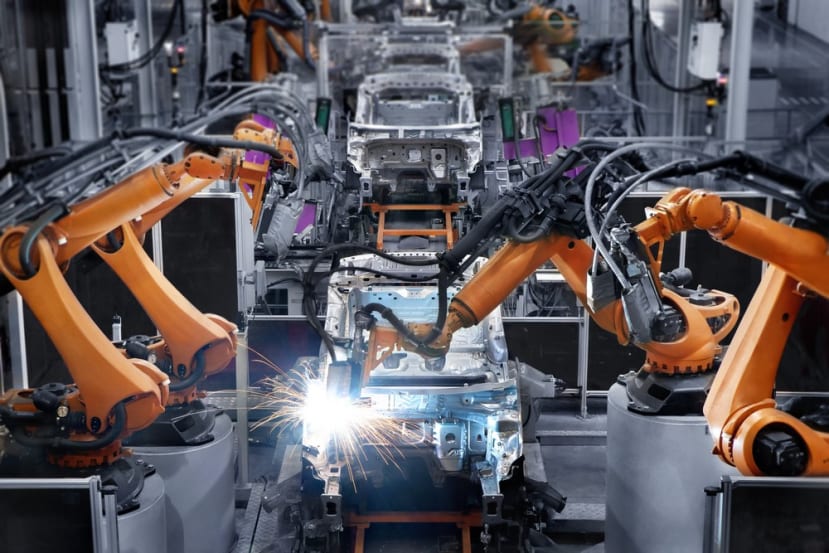Are you looking after your Robot?
Follow articleHow do you feel about this article? Help us to provide better content for you.
Thank you! Your feedback has been received.
There was a problem submitting your feedback, please try again later.
What do you think of this article?
Unexpected breakdown of Industrial robots can cost millions, we spoke with one supplier to the automotive industry who explained that every minute of downtime on one machine would cost the company £60,000, extend this to an hour then you’re talking £3,600,000. This is only the monetary cost, the cost as a reputable supplier in the automotive industry is priceless. With cars and machinery coming off the production lines constantly, mirrored with a just in time model of supplied parts, you can understand why a breakdown further up the supply chain proves expensive.
When purchasing industrial robots there usually is a fixed period of support from the manufacture (dependant on contractual agreements). This is where maintenance and breakdown cover is on hand as part of the purchase agreement, when this cover period expires the ownership of maintenance will pass to company who purchased. At this time there should be an extensive maintenance manual in place for the robot, coupled by personnel capable of delivering the required levels of support.
When a robot goes off line its common that what is behind the breakdown is something that could have been avoided through routine planned or preventative maintenance. Reactive maintenance is not something that should be the norm when maintaining robots.
Maintenance of an industrial robot is an ongoing mix of daily and planned activities. Simple tasks like cleaning, oiling and replacing minor parts help keep breakdowns to a minimum, but with many different aspects to an industrial robot it pays to understand each element and where to target effective maintenance.
There are six key areas associated within an industrial robot, but often overlooked is the controlled environment, by which we mean safety zone.
- Controller - Includes microcontrollers, power control equipment, control interface,
- Arm – Contains the arm axis allowing movement
- Drive – Can be either Hydraulic, Pneumatic of electric and are the joints between the arm links
- End Effector – Basically the robots hand, contains the part in which the interaction takes place. Common effectors are grippers, welding torch, vacuum pumps and magnets.
- Sensors – The feedback components to send information to the controller, can be a mixture of sensors used to control speed, position, distance, proximity, vision and sound. The link between sensor and end effectors allow for variances during operation.
- Safety Zone – Controlled area where robot operation takes place. Contains many safety devices to ensure machine and operator safety.
For these it’s important to ensure that suitable maintenance routines are in place.
The maintenance can be broken down into periodic chunks such as daily, monthly, quarterly and yearly, or even an approach based on operational hours (running times).
Here are advisory checks that you may wish to consider.
Daily
Check all sensors, including inductive sensor, photoelectric sensors and limit switches are free from containments and there are not obvious signs of damage or deterioration.
Ensure all mechanical joints are well greased and there are no oil leaked around seals.
All safety equipment is in place is checked and operational.
Monthly
Ensure cable and insulation are free from cuts, tears, kinks and abrasions.
Inspect axis joints for any sign of damage.
Check for dust and debris build up within the control cabinet and ensure the airflow and cooling fans are clean.
Quarterly
Check mounting base and ensure all bolts are secure and free from damage, tighten any loose bolts to the correct tension.
Ensure all cable glands and terminations are tight and that cables have no signs of kinks, cuts and tears.
Inspect cable chains example (486-8686) and trucking example (814-2329) to assess whether there is wear and tear.
Examine the end effector to ensure all mounting components are tight and secure.
Year 1
Replace all batteries
Check all grease and lubricant points and apply as necessary
Year 2
Carry out re-grease on all axis, use only the recommend grease as stipulated by the manufacturer.
Replace any cable where wear and tear is apparent.
Develop a planned approach
These recommendations above are only for guidance, it’s advised that a clear preventative maintenance is schedule is created for each individual robot within the facility. Also it’s worth noting that each plan is reviewed on a regular basis to ensure it’s still appropriate.
If your robot is no longer under warranty then it’s advisable to ensure that you have access to replacement products that can be delivered quickly, better still, is to have key products on standby for any unplanned breakdown. Consider the following…




